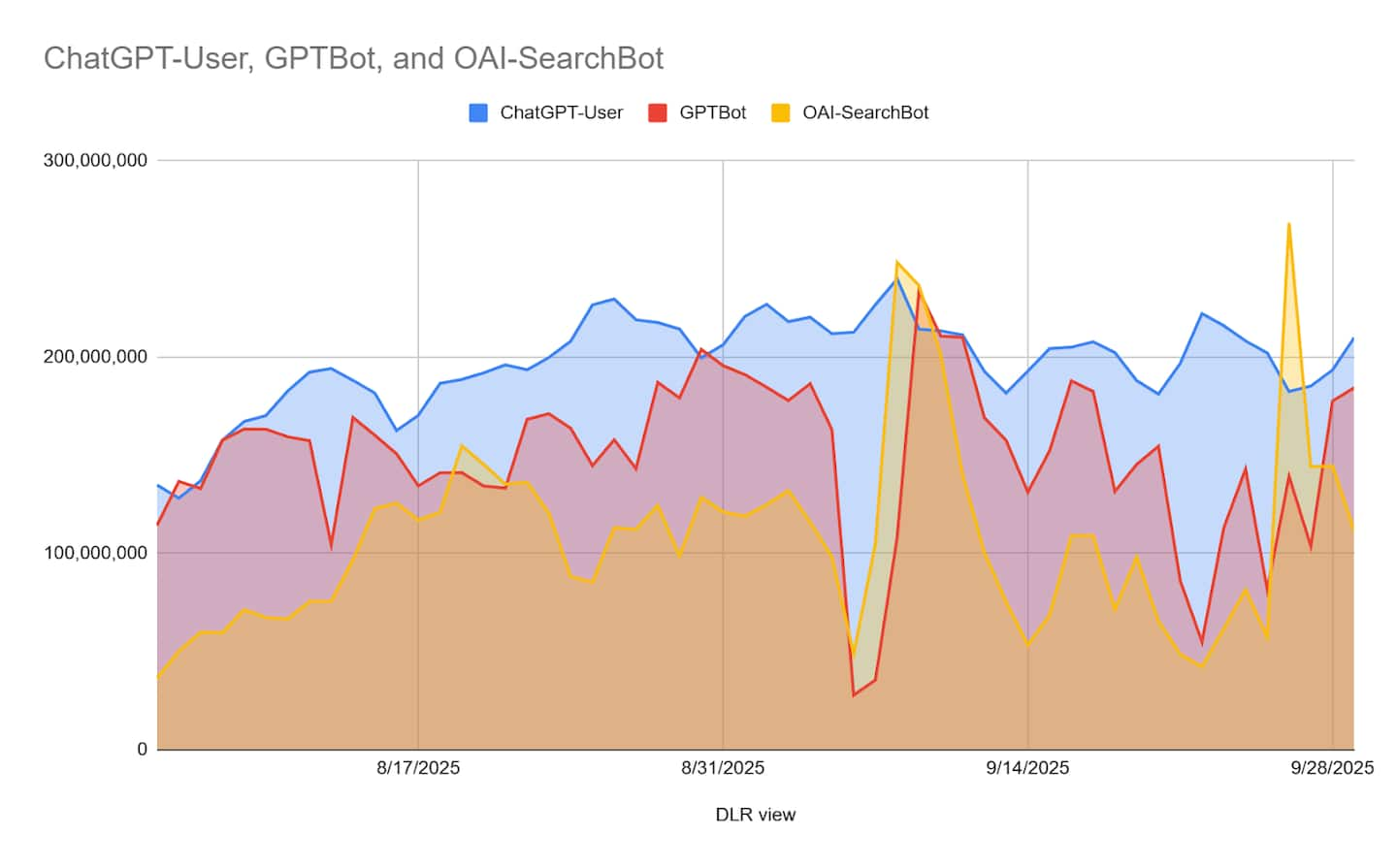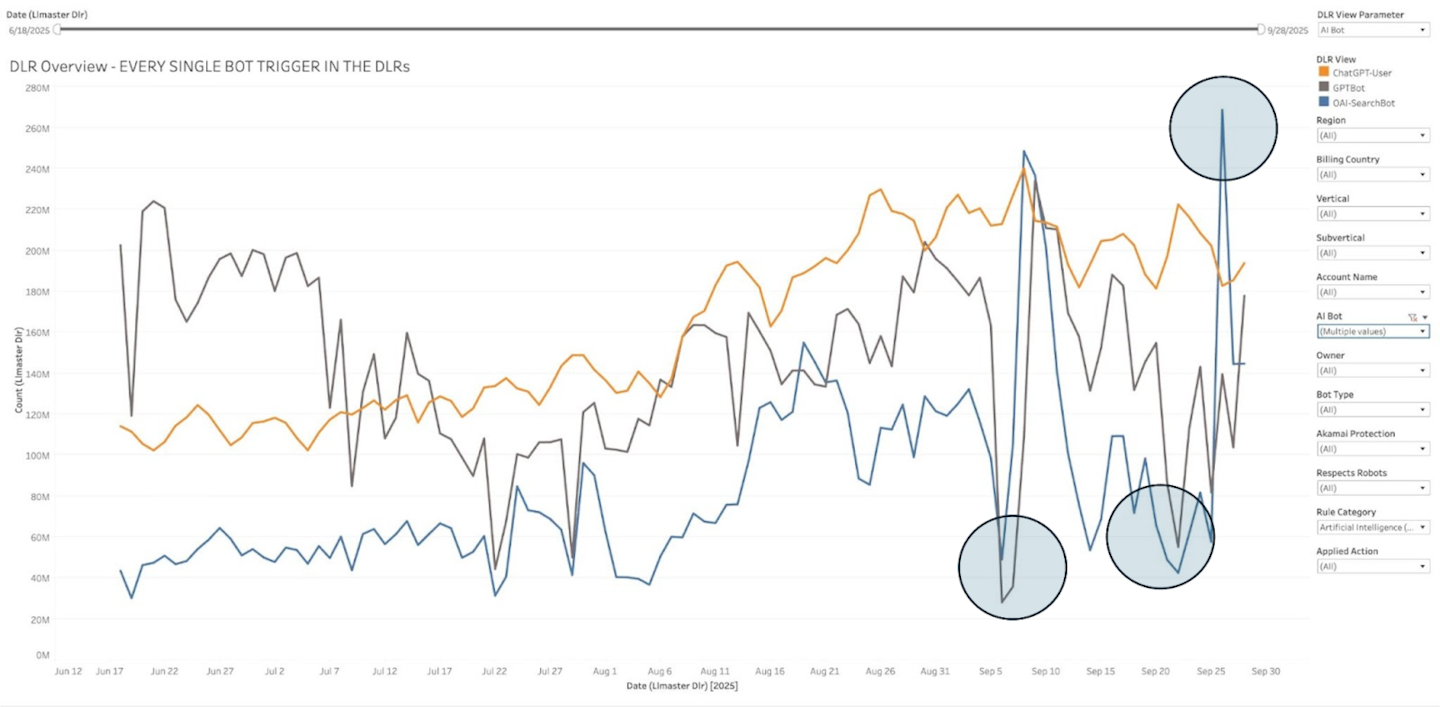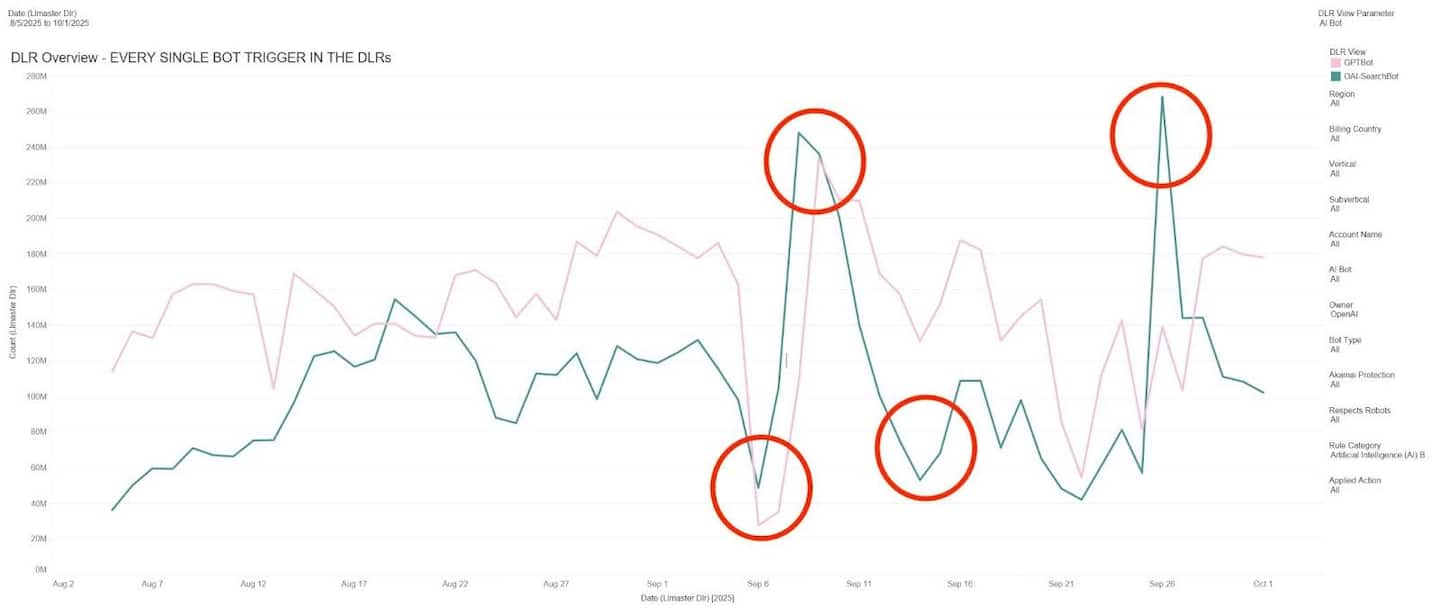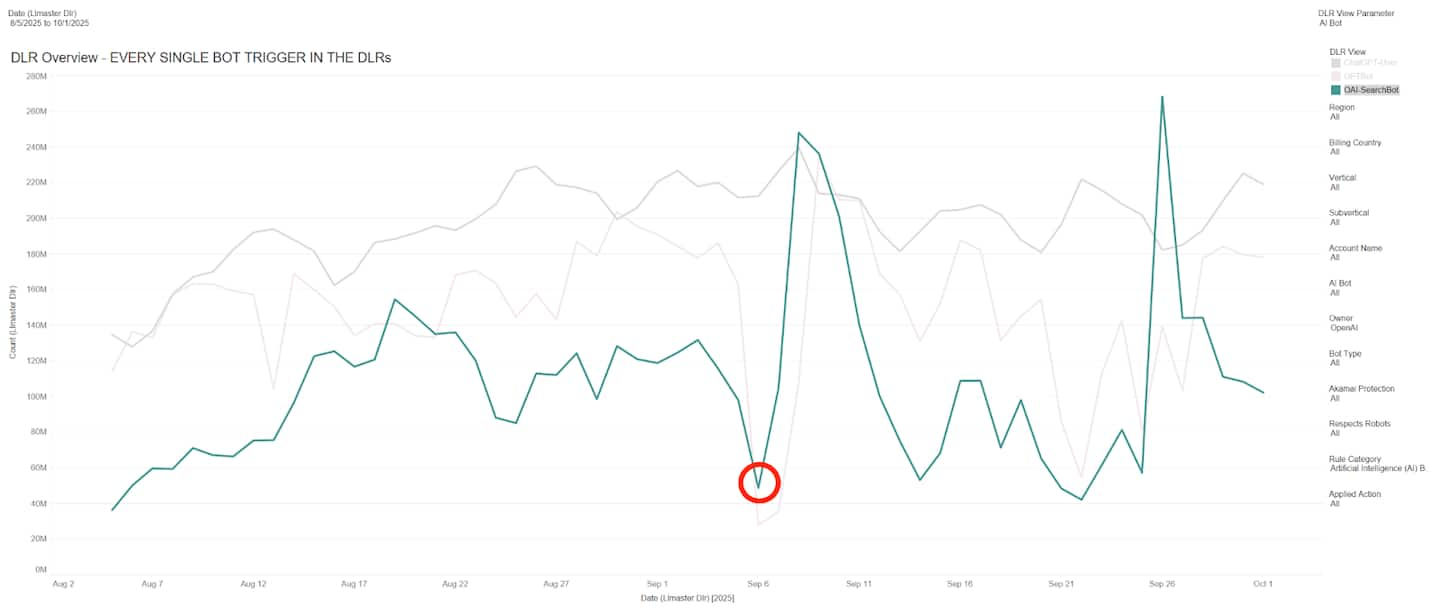Additional commentary by Emily Lyons
Introducing AI Pulse
We’re excited to launch AI Pulse, a blog series that takes a look at the current state of AI bots.
Akamai protects the world’s largest organizations, which gives us unmatched visibility into billions of AI bot requests every single day. These bots are reshaping the internet in real time, and we see them at a scale no one else can. In this series of eight blog posts, we will share key insights from that traffic — diving into who the bots are, what they want, and how they behave.
The woolly mammoth: OpenAI
Since the start of 2025, we’ve observed AI bot traffic increasing dramatically across web apps and APIs, rising nearly 300% year to date. Across our customers, OpenAI (inclusive of ChatGPT-User, GPTBot, and OAI-SearchBot) produces the majority of AI bot traffic.
So, we’re kicking off our AI Pulse series by investigating the woolly mammoth of all AI companies: OpenAI.
Summer’s end was generally a weird time for OpenAI (OAI) in terms of traffic for our customers. Over the last two months, OpenAI has made a lot of changes to its platform and offerings — and, in response, its bots and agents have changed their behavior toward our customers.
The release of GPT-5
Beginning on August 5, 2025, OpenAI released its new state-of-the-art model, GPT-5. For the rest of the month, traffic from the OpenAI platform trended upward: OAI-SearchBot was up by 136%, ChatGPT-User was up by 65%, and GPTBot was up by 66% (Figure 1).
Although some of this growth can be attributed to assumed greater use of OpenAI, given the improvements made around GPT’s search functionality, changes in how aggressively the new model is using external sources may also be fueling this growth.
Let’s dive into the individual AI bots managed by OpenAI and their behaviors since the GPT-5 release.
ChatGPT-User
As illustrated in Figure 2, ChatGPT-User has been behaving relatively consistently since we started tracking, with an approximately 90% to 100% increase in daily triggers. Since the release of GPT-5 on August 5, 2025, however, growth has been even more significant.
Our team assumed the general GPT-5 update might have attracted more OpenAI users, but because the growth took time to fully develop, we believe the increase was fueled by more than just the change to the model protocols.
OAI-SearchBot and GPTBot
Through the end of August and into September, our team observed that OAI-Searchbot and GPTBot have been experiencing odd fluctuations in their traffic (Figure 3).
For example, on September 6, there was a significant drawdown in traffic, followed by a spike on September 7 and September 8. Then, there was an additional drawdown that spanned some time, and another spike on September 26 that was seemingly just with OAI-Searchbot.
We assume that these dramatic shifts in traffic were largely caused by platform changes (such as the GPT-5 update) and/or potential issues OpenAI encountered.
For example, let’s take a look at September 5 (Figure 4).
On September 5, there seemed to be some sort of anomaly or bug in OpenAI’s system that was leading to reports of large percentages of web requests made by the OpenAI search tool returning null.
This theory may be corroborated by the traffic patterns we see for OAI-SearchBot around that date, with a major drop in traffic followed by a spike to levels higher than before. Traffic then stabilized over the next few weeks, after which OAI made a release note that they had made recent improvements to search.
Additionally, on September 26, we saw a large increase in OAI-SearchBot, the day after OpenAI announced an early version of its new product for Pro users called Pulse, which does asynchronous research overnight on its users’ behalf.
User adoption and platform/model changes can affect traffic
This series of events demonstrates the ability of both user adoption and platform/model changes to dramatically affect the expected traffic behavior, and that this can often happen while we’re still in the early days of this scope of internet activity and bot behavior.
Potential correlation
One other note (that has yet to be proven): The GPTBot behavior being slightly offset from OAI-SearchBot leads us to believe that they are correlated — and that GPTBot may be piggybacking on OAI-SearchBot to find training information most relevant to what users are searching for.
The so what
Here’s the takeaway: AI bots move fast, and their behavior can swing overnight. What looks like a stable pattern one week can spike, vanish, or resurface the next. For businesses, this means AI-driven demand on web apps and APIs can shift suddenly based on platform updates, user adoption, or even experimental features.
Our goal with the AI Pulse series of blog posts is to track data signals in real time and turn them into insights you can actually use. Every post will bring you one data point, one trend, or one story that tells you something new about how AI is reshaping bot traffic.
Stay tuned for the next insight.
Learn more
To learn more about how Akamai can help your business manage AI bots, contact an expert.
Tags








